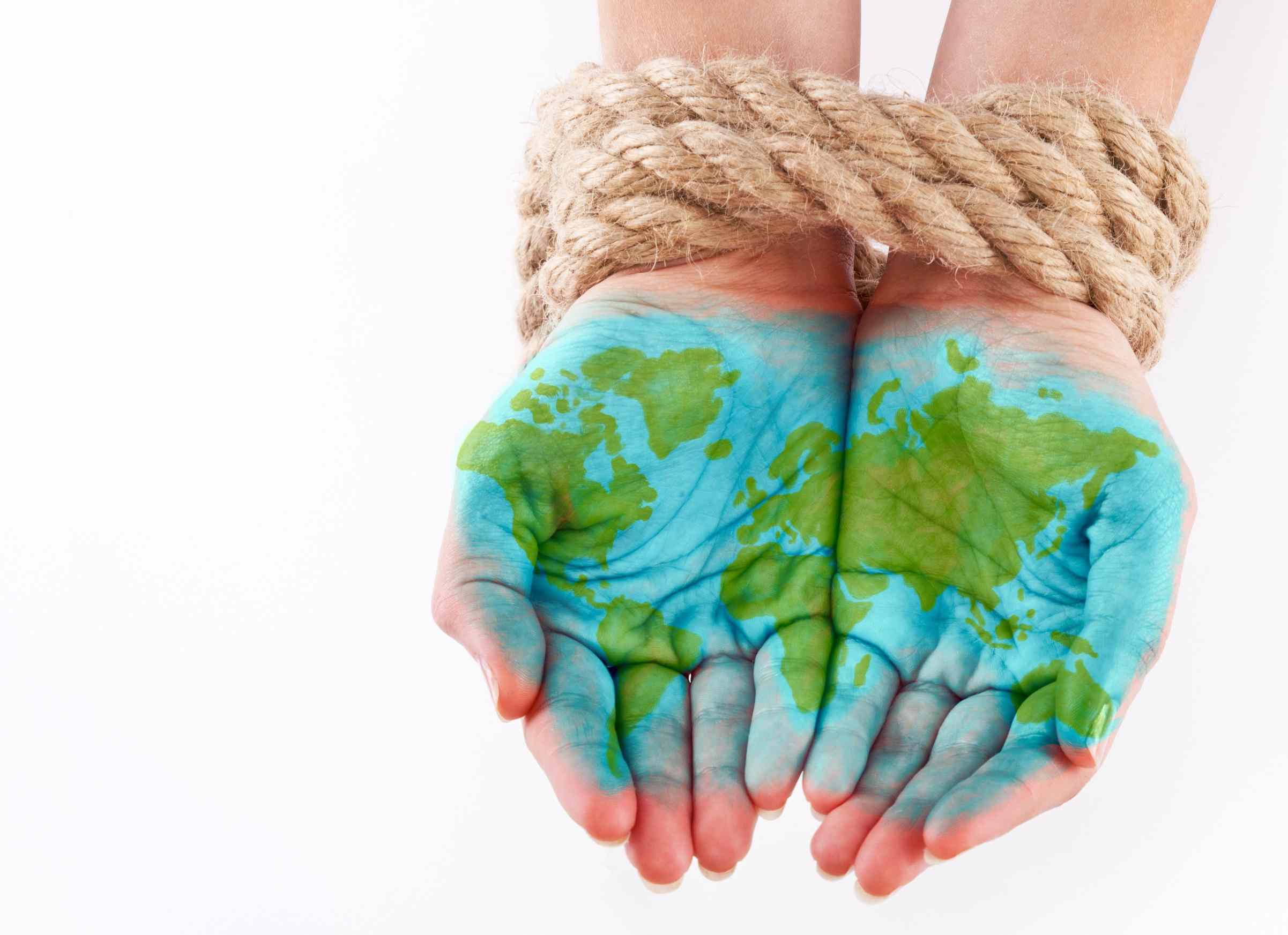In 2022, the third world crisis began to spiral out of control. The heart of Europe was at war, and a global food crisis, drought, and flooding caused by climate change occurred. An unusual number of people fled from their homes.
What led us here, and how can we go about it?
So, in 2023, will major territories engage in conflict or end an almost 80-year nuclear arms embargo?
Will political unrest, economic hardship, and climatic disaster lead to social unrest in specific nations and worldwide?
The worst-case scenarios for this year's major issues seem impossible. Given the previous few years, ignoring the impossible now would be careless.
Current Crisis And Conflicts In The World Today 2023

The biggest number ever recorded of 108 million people were forced to leave their homes by conflict, violence, or persecution at the end of 2022.
The rate of hunger cases is also rising. According to the United Nations Food and Agriculture Organization, one in ten people go to bed hungry each night.
The Internal Displacement Monitoring Centre's 2023 Global Report on Internal Displacement emphasizes the connection between hunger and violent conflict. According to current information, approximately 75 percent of the nations experiencing severe food shortages also have internally displaced people.
Climate change frequently causes food shortages. In particular, the Middle East and East Africa are experiencing longer, more frequent, and more severe droughts due to climate change.
The Ukrainian conflict has extensively impacted the world economy and food supplies. Additionally, due to the economic turmoil and misery in the Global South, more people are attempting dangerous voyages through the forest and across the sea.
In 2022, the international community increased its financial commitments in an emergency response to humanitarian concerns. This was mainly due to the extraordinarily well-funded Ukrainian crisis.
However, the disparity between demands and funding is worse than ever. Almost US$22 billion of the worldwide humanitarian appeal still needs to be raised, and financing for many emergencies has decreased.
We require a coordinated strategy to address these issues. We require a broad perspective.
Africa
More than a third of the displaced individuals in the globe are from Africa. People are being driven from their homes by old and new conflicts. At the same time, climate change produces acute food shortages and resource competition, which is made worse by a lack of humanitarian action.

Hardship in the Sahel is still growing.
The Sahel region is a strip of terrain that runs from Senegal in the west to Ethiopia in the east, just south of the Sahara Desert. It also hosts one of the largest and least well-known humanitarian crises globally.
The combination of armed war, political unrest, climate change, food shortages, and disease has led to a mega-crisis affecting many nations.
More than 37.75 million people will require life-saving assistance in Burkina Faso, Cameroon, Chad, Mali, Niger, and Nigeria by 2023. Unsettlingly, the violence extends to peaceful coastal states like Ghana, Côte d'Ivoire, and Benin.
Burkina Faso
The situation in Burkina Faso is the worst. Approximately 40% of the land is controlled by jihadist organizations, including huge rural areas in the north and east. Djibo, a significant northern town, has been under siege by militants for months. Fighting has resulted in the deaths of thousands of people and the eviction of roughly two million people. As the losses increase, the army begins to point fingers.
Mali
Mali itself had two coups in 2020 and 2021. In the far north, the state is essentially nonexistent. There, militants with ties to the Islamic State and al-Qaeda combat non-jihadist rebels, most of whom are Tuareg, who inhabit much of the Sahel.
Niger
Alarming conditions are prevalent in Niger. The government has either refused to arm civilian militias or absorbed them into the security forces. Its willingness to confront terrorist organizations may have also led to decreased violence.
Nevertheless, a coup attempt against President Mohamed Bazoum in March 2021 failed, and subsequent arrests, including those of high-ranking soldiers, may have stoked resentment among the army. Jihadists are approaching Niamey, the country's capital, by entering parks and forests along the borders with Burkina Faso and Benin.
Violence and hunger in DR Congo
The Democratic Republic of the Congo experienced devastation last year due to escalating violence and a serious hunger crisis.
The DR Congo situation is complicated. More than 120 non-state armed groups are just in the nation's east. After an eight-year pause, the biggest of these, M23, started attacking again in November 2021.
Over 500,000 people were forced to flee their homes due to the violence, which significantly worsened in March 2022 and continued throughout the rest of the year.
By the end of the year, the world's third-largest number, or about 5.7 million individuals, had been displaced. Additionally, the majority of the world's severely food-insecure people reside in DR Congo.
There was hope for progress during the peace talks in Nairobi and Luanda, which were sponsored by other nations in the region.
However, the 27 million Congolese who require food aid have yet to notice any appreciable changes in their standard of living.
Climate crisis and armed conflict in Somalia

In 2022, the climatic disaster in East Africa became a scary reality for millions of Somalis. On August 11, the worst drought in 40 years reached historic heights. For the first time since the drought started in January 2021, one million individuals were officially documented as being displaced by it.
As experts argued whether or not to declare a famine, Somalis were starving to death. In 2022, the drought may have killed up to 43,000 people, half of them were children under the age of five, according to a recent estimate by the Somalian government and UN organizations.
Conflict and rising food insecurity in many regions of the country aggravated the drought's consequences, making it more challenging for humanitarian organizations to assist those in need. In addition, food costs sharply increased. 90% of Somalia's wheat used to come from Russia and Ukraine, but when conflict broke out in Ukraine, Somalia was obliged to locate other, more expensive food sources.
Alarmingly, it appears that 2023 the situation in Somalia will worsen. A deadly concoction of conflict, drought, and floods had compelled more than 1 million people to evacuate their homes between January and mid-May, a record-keeping up of displacement for the nation.
Asia and the Middle East
The number of displaced individuals in the Middle East remained relatively the same in 2022. However, this apparent balance should be considered something other than stability.
Disaster and destruction in Syria
12 years of horrific warfare. Half the population is now homeless, and half of them are dead. Water shortages, droughts, a collapsing economy, and a sharp drop in fundamental services. At the beginning of 2023, with a record-high 15.3 million people in need of humanitarian aid, Syria's long-suffering population appeared to have gone through every nightmare imaginable.
Even worse, though, was about to come. A 7.8-magnitude early morning earthquake struck the Turkish-Syrian border region on February 6, 2023. A few hours later, another earthquake of a comparable size occurred.
The earthquakes destroyed a region the size of Germany. Nearly 60,000 people died, including 500,000 Syrians, and millions were left homeless. The conflict has forced many people displaced in Syria from their homes in the past decade (in some cases, more than once).
Thousands of people have been living in group shelters for four months with little hope of returning to their destroyed homes. Many others have decided to return to homes with damaged ceilings and walls.
Yemen's ceasefire offers hope.
On April 2, 2022, a long-awaited ceasefire in Yemen was declared after seven years of horrific fighting. The conflict's sides agreed to a two-month ceasefire, which was extended to six months.
The truce's provisions remained in effect even though it formally expired in October. Numerous captives were released, and fighting and accompanying civilian losses declined. The port of Hodeidah saw an increased flow of commercial items and fuel. Yemen is experiencing its longest stretch of relative peace in this destructive war.
The de facto cease-fire is shaky, though, and many needs remain. Due to the fighting, Yemen's economy is rapidly deteriorating, and its public infrastructure is in chaos; less than half of the nation's health institutions are reportedly operational. Currently, a startling three-quarters of Yemen's population requires humanitarian aid.
The international community has a rare opportunity to capitalize on the momentum generated by the truce. This opportunity must not be missed.
The troubling restriction on female aid workers in Afghanistan
The situation descended to a shallow point on December 24. Afghan women are not permitted to work for NGOs, according to a nationwide directive issued by the Taliban government. As a result, several organizations were obliged to halt their operations since they could not continue providing humanitarian aid following their core values.
Wherever humanitarian organizations work, female workers are essential to ensuring that both men and women get the help they need. This also applies to Afghanistan. Using male-only teams to help families with female heads of household could have significant repercussions for the women and children involved.
The restriction was extended to Afghan women who work for the United Nations (UN) in April 2023. The action puts millions of people in danger and threatens to jeopardize all humanitarian assistance and funding to the nation. More than 28 million Afghans, including 6 million on the verge of hunger, need humanitarian help to survive.
America
In El Salvador, Guatemala, and Honduras, extreme violence destroys lives. Drug traffickers, organized crime, and armed gangs contribute to the region's corruption and violence.
Nearly one in three residents of North Central America is currently in desperate need of assistance. However, despite the UN announcing its initial preparations for humanitarian intervention in El Salvador, Guatemala, and Honduras in 2021, the crisis still must be taken seriously.
One of the most underfunded crises globally in 2022, only 27% of the financing needed in El Salvador was contributed by international donors.
The area is also susceptible to severe weather conditions. El Salvador witnessed significant flooding in 2022, two years after the disastrous hurricanes Eta and Iota, which Hurricane Julia brought on.
Wandering through these dangerous regions in pursuit of safety and possibilities in North America are desperate migrants, some of whom come from as far away as Africa and Asia. Many people feel let down.
Over the year, about 200,000 people were deported from Mexico and the United States to El Salvador, Guatemala, and Honduras.
Gangs take control of Haiti's capital.
There was insecurity throughout the area, not only on the mainland. In 2022, violence in Haiti led to 106,000 displaced people. This was the highest figure ever recorded for the country and a five-fold increase from 2021.
Since the nation's president was assassinated in July 2021, crime-related violence has seen a noticeable increase. Violent incidents virtually increased in 2022 compared to the previous year, as gangs took over 60% of Port-au-Prince, the nation's capital.
The most helpless in Venezuela look for solutions elsewhere
In recent years, approximately 7.2 million people have left the nation for safety and a better life.
However, many migrants and refugees have been unable to find the chances they hoped for in nations like Chile, Colombia, Ecuador, Peru, or Colombia. Once more, many Venezuelans are attempting to reach the United States through hazardous routes.
The Humanitarian Needs Overview estimates that over 20 million Venezuelans will require humanitarian aid by 2022. Food shortages have affected nearly a third of the population. Despite the vast scope of humanitarian needs in this context, the international community contributed only 36% of the funding required for these efforts.
However, the advances have not yet reached the most helpless Venezuelans, increasingly turning to dangerous travel. Over 150,000 refugees and migrants from Venezuela arrived in Panama alone in 2018, more than five times as many as in 2021.
Europe
On February 24, 2022, the situation in eastern Ukraine erupted into a full-fledged war after eight years of low-intensity fighting. Millions of Ukrainians left their homes for safety in a couple of weeks.

Basic needs are severely affected.
Despite initial expectations of a quick resolution, the conflict shifted. A year passed after six months.
The Russian Federation attacked crucial energy infrastructure throughout the winter, resulting in outages in numerous towns. Numerous people were left without gas, water, or heating.
Numerous residential buildings in urban areas were also attacked, resulting in civilian fatalities and injuries.
More displaced individuals following the conflict
The conflict is still ongoing but unexpected at this time. Within Ukraine, there are more than 5 million displaced persons, and 5.7 million more are dispersed throughout Europe. The most significant mass emigration in Europe since World War Two is being experienced now.
Neighboring nations are affected.
More than just the boundaries of Ukraine have been affected by the war. Poland alone is home to about a million refugees, a significant quantity compared to Ukraine's neighbors.
The Republic of Moldova, on the other hand, is one of the nations housing the greatest proportion of Ukrainian refugees per resident, including several of the most at-risk populations like the Roma community.
A sudden increase in Energy prices
Energy prices have increased due to the conflict, creating a cost-of-living problem in Europe and beyond.
The COVID-19 pandemic has severely impacted global trade, which is still precarious. Russia and Ukraine majorly produce staple foods like wheat and sunflower oil.
Due to shortages and import restrictions brought on by the war, food costs have skyrocketed in places like Central Asia, the Middle East, and Africa.
The sudden start of a major war in Europe is the world's most alarming development. It has created uncertainty, fear, and a sense that the globe is less stable.
The crisis in Ukraine is still one of the best-funded in the world. However, the international community's generosity has contrasted sharply with its lack of support for other, less apparent problems worldwide.
However, this generosity can be limited. Other significant crises, including Syria and Yemen, have demonstrated that institutional and private donors' support tends to diminish over time.
As the conflict in Ukraine drags on, humanitarian organizations are preparing for a steady decline in financing.






















































